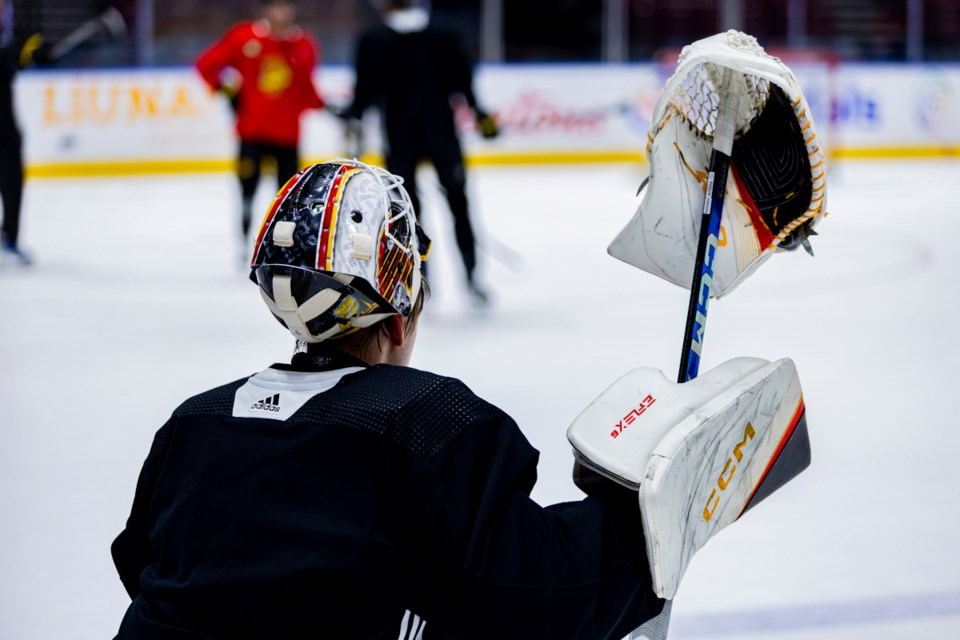There will be some changes coming to the NHL in the not-so-distant future.
The NHL's board of governors and the NHL Players' Association (NHLPA) have officially ratified a memorandum of understanding (MOU) that modifies the current collective bargaining agreement (CBA) between the two sides and extends the CBA for another four years starting September 16, 2026. The league published the MOU on Friday morning, detailing the many changes agreed to in order to prevent a potential labour stoppage.
NHL/NHLPA Memorandum of Understanding. https://t.co/G3wOXe93SX pic.twitter.com/4wZJL7i5Gb
— NHL Public Relations (@NHLPR) July 11, 2025
While much of the 167-page document is esoteric legalese about things like healthcare, per diems, and hockey-related revenue (HRR) that fans will never see, there are some changes that will affect the fan experience. In fact, one change will have a pretty significant impact on one fan per team.
New rules for NHL EBUGs
The new MOU changes the rules for one of the most unusual aspects of the NHL: the emergency backup goaltender (EBUG). NHL teams dress just two goaltenders — a starter and a backup — for every NHL game, which leaves them in a pinch if both goaltenders get injured. That's where EBUGs come in.
Previously, every NHL team was required to have an EBUG at each home game ready to step in for either team, typically just to sit on the bench if one of the team's goaltenders was unavailable due to injury.
EBUGs are rarely called upon but, when they are, it can become part of NHL legend, such as the time UBC goaltender Chris Levesque came gum-chewingly close to stepping in for the Canucks. Johan Hedberg came charging out of the net, got run over, and stayed down. Hedberg actually fractured his wrist on the play, but played through the injury to prevent an untested college kid from having to step on the ice.
The most famous EBUG of all time is David Ayres, a 42-year-old Zamboni driver for the Toronto Marlies who was forced into action for the Carolina Hurricanes in the second period of a game against the Toronto Maple Leafs and made 8 saves on 10 shots to earn the win.
That specific situation won't happen again, as the MOU now requires all NHL teams to carry their own EBUG throughout the season for all home and away games. That means there will be two EBUGs at every game, with no possibility of someone like Ayres being called in to play against his hometown team.
Each EBUG is required to meet certain eligibility requirements. So, who meets those requirements? Most likely, you do.
EBUG eligibility requirements
Here are the requirements to serve as an EBUG, or as the MOU puts it, an "Emergency Goaltender Replacement."
In order to be eligible to serve as a Club's Emergency Goaltender Replacement, an individual must not:
- have played an NHL Game under an NHL SPC; (Editor's note: Standard Player Contract)
- have played in more than 80 professional hockey games;
- have played professional hockey in the prior three (3) seasons;
- have another current contractual obligation that would preclude the ability to serve as the Club's Emergency Goaltender Replacement; and
- be on the Reserve List or Restricted Free Agent List of an NHL Club.
I don't know about you, but I fit all of those requirements. I have yet to play a single NHL game and, at the age of 40, I'm beginning to doubt whether I'm going to get drafted anytime soon to get put on an NHL team's reserve list. So, I'm in! Let's do this, Canucks.
Well, not so fast.
The entire purpose of this change to the CBA is so that teams can employ "capable goaltenders" according to the MOU. It's not specifically laid out in the requirements that the EBUG be "capable" but it's listed in the "objective" of the policy.
Each EBUG has to be approved by the NHL. When teams provide the name of their proposed EBUG to NHL Central Registry, they also have to provide the "detailed playing experience" of said goaltender, presumably so the NHL can assess both whether the goaltender fits the eligibility requirements and whether the goaltender is "capable."
The MOU also says the "individual may also be employed by the Club in another capacity." The likely result is that a member of the team's staff, whether a goaltending coach, trainer, or member of management, will be called upon to be the team's EBUG, as long as they fit the eligibility requirements. That makes sense, especially given the need for the EBUG to travel with the team on the road.
Still, it would be exceptionally cool if the Canucks had an open call for the EBUG position.



